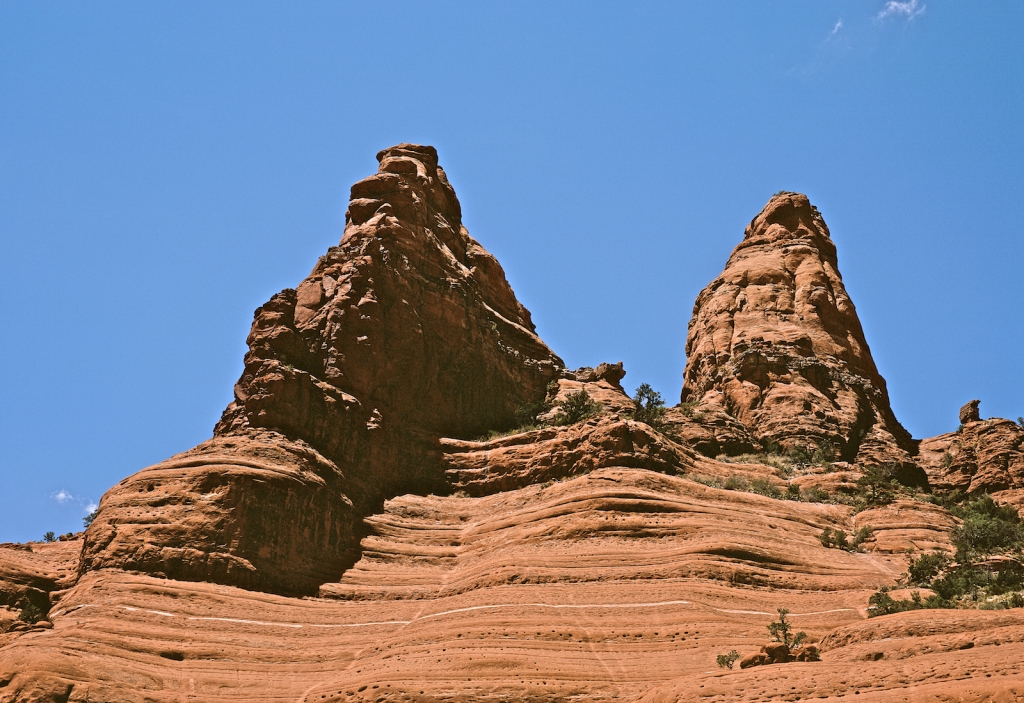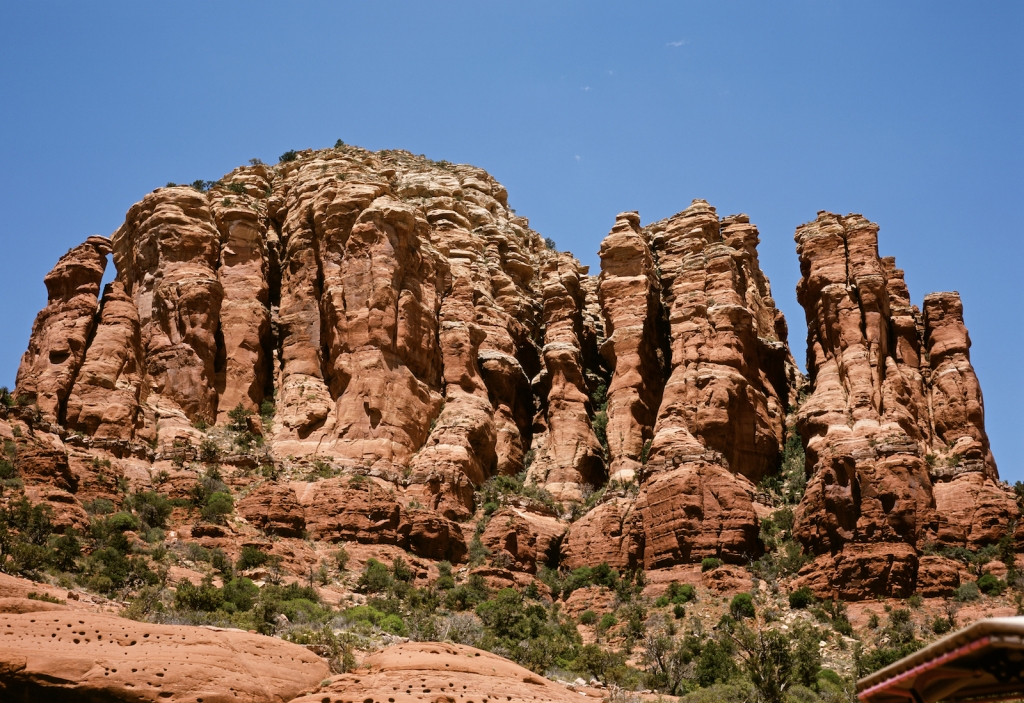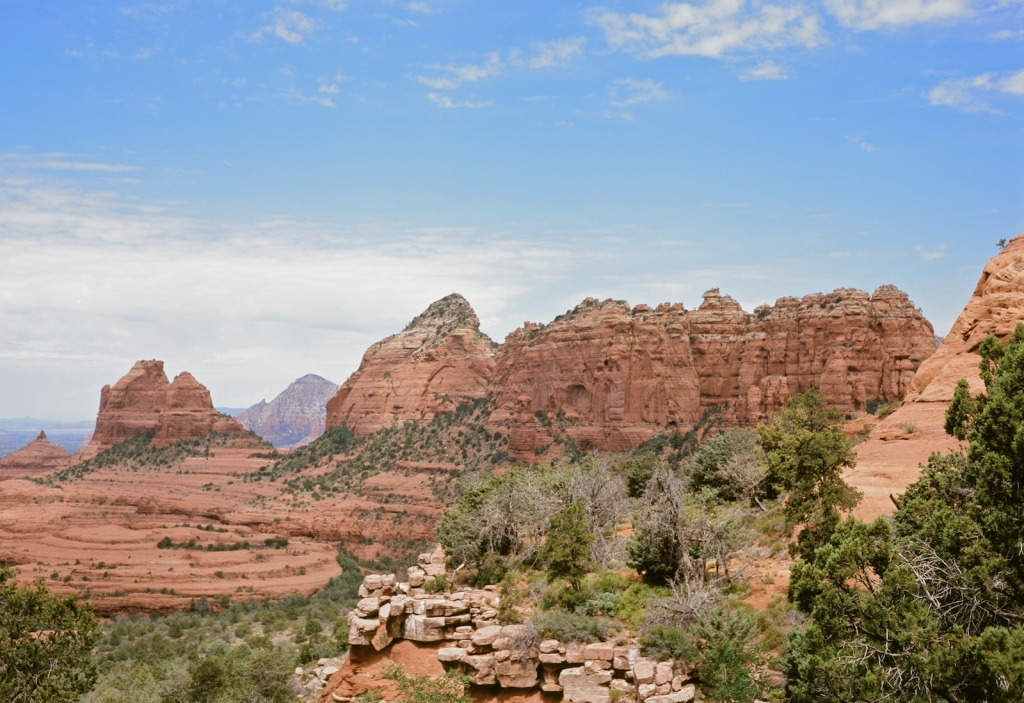| View previous topic :: View next topic |
| Author |
Message |
rbelyell


Joined: 13 Oct 2009
Posts: 4269
Location: somewhere in the mountains of central NY
Expire: 2014-01-31
|
 Posted: Wed Jul 28, 2010 1:52 pm Post subject: first ever slides: sedona arizona w mamiya universal Posted: Wed Jul 28, 2010 1:52 pm Post subject: first ever slides: sedona arizona w mamiya universal |
 |
|
rbelyell wrote:
we just returned from a driving trip of the u.s. southwest. i took my newly acquired mamiya universal with 100mm 3.5 lens with 6x9 back. i metered the pictures with my canon 5d, i used fuji velvia 100 and most taken at 8.0. for my first time i was quite pleased, but as i am a novice i welcome c&c. also, these are resized from large tiff files for 1600x1200. anyway, hope you enjoy, and will post separate slides of the grand canyon.
PLEASE, YOU MUST CLICK ON EACH PHOTO FOR BEST RESOLUTION AND COLOR!!!!




_________________
Epson RD1 + Elmarit 21/2.8; Summarit 50/1.5; Summarit 75/2.5; Elmar-c 90/4; Sankyo Komura 135/2.8, Hektor 135/4.5; Braun Paxina 29 6x6; Photax Boyer Paris; Holga 120 Pano
GREAT STUFF FOR SALE:
Contax T
Hasselblad XPan + 45/4, 90/4
Kodak Retina Reflex IV + full set of Schneider Krueznach lenses
Mercury 2 half frame 35mm
Kodak Pro slr/n
Fuji GM670+100/3.5+65/8!
Praktisix 6x6 medium format + ZeissBiometar 120/2.8
Bessa T 101 Anniversary Edition in Navy Blue
Mamiya Six Folder with Zuiko 75/3.5
Adaptall: Tamron SP 28-85 macro
Cameras: Canon IX
PM for more complete descriptions/pix. All in great shape!
_________________________
'buy me a drink, sing me a song,
take me as i come 'cause i can't stay long'
Last edited by rbelyell on Wed Jul 28, 2010 2:17 pm; edited 1 time in total |
|
| Back to top |
|
 |
Attila


Joined: 24 Feb 2007
Posts: 57865
Location: Hungary
Expire: 2025-11-18
|
 Posted: Wed Jul 28, 2010 2:07 pm Post subject: Posted: Wed Jul 28, 2010 2:07 pm Post subject: |
 |
|
Attila wrote:
Slide...... I am glad you start to use it .... I expect more blue sky and more saturated colors from Velvia. Perhaps a bit overexposed or just light was very strong there.
_________________
-------------------------------
Items on sale on Ebay
Sony NEX-7 Carl Zeiss Planar 85mm f1.4, Minolta MD 35mm f1.8, Konica 135mm f2.5, Minolta MD 50mm f1.2, Minolta MD 250mm f5.6, Carl Zeiss Sonnar 180mm f2.8
|
|
| Back to top |
|
 |
rbelyell


Joined: 13 Oct 2009
Posts: 4269
Location: somewhere in the mountains of central NY
Expire: 2014-01-31
|
 Posted: Wed Jul 28, 2010 2:16 pm Post subject: Posted: Wed Jul 28, 2010 2:16 pm Post subject: |
 |
|
rbelyell wrote:
the light was extremely strong! many told us it was the worst time of the year to take pictures! still, never having used this camera or slides before, i was pretty happy with the result, though i did think velvia would yield more saturated colors, which is why i chose it. at the grand canyon, the naked eye could see only whitewashed rock in the distance. i should have brought along a polarizing filter, but foolishly left all filters at home....
also attila, if you click on each picture you will see much closer to what i see on my monitor--much deeper color.
_________________
Epson RD1 + Elmarit 21/2.8; Summarit 50/1.5; Summarit 75/2.5; Elmar-c 90/4; Sankyo Komura 135/2.8, Hektor 135/4.5; Braun Paxina 29 6x6; Photax Boyer Paris; Holga 120 Pano
GREAT STUFF FOR SALE:
Contax T
Hasselblad XPan + 45/4, 90/4
Kodak Retina Reflex IV + full set of Schneider Krueznach lenses
Mercury 2 half frame 35mm
Kodak Pro slr/n
Fuji GM670+100/3.5+65/8!
Praktisix 6x6 medium format + ZeissBiometar 120/2.8
Bessa T 101 Anniversary Edition in Navy Blue
Mamiya Six Folder with Zuiko 75/3.5
Adaptall: Tamron SP 28-85 macro
Cameras: Canon IX
PM for more complete descriptions/pix. All in great shape!
_________________________
'buy me a drink, sing me a song,
take me as i come 'cause i can't stay long' |
|
| Back to top |
|
 |
Attila


Joined: 24 Feb 2007
Posts: 57865
Location: Hungary
Expire: 2025-11-18
|
 Posted: Wed Jul 28, 2010 2:23 pm Post subject: Posted: Wed Jul 28, 2010 2:23 pm Post subject: |
 |
|
Attila wrote:
Slide can do magic , but very sensitive for right lights and exposition. In my practice better to underexpose a bit if I am unsure how accurate is my light meter.
You did measure light on ground, on these slides. If no ND filter I think better measure to sky , see samples
http://forum.mflenses.com/tenerife-on-film-t11528,highlight,tenerife.html
_________________
-------------------------------
Items on sale on Ebay
Sony NEX-7 Carl Zeiss Planar 85mm f1.4, Minolta MD 35mm f1.8, Konica 135mm f2.5, Minolta MD 50mm f1.2, Minolta MD 250mm f5.6, Carl Zeiss Sonnar 180mm f2.8
|
|
| Back to top |
|
 |
cooltouch


Joined: 15 Jan 2009
Posts: 9096
Location: Houston, Texas
|
 Posted: Wed Jul 28, 2010 7:19 pm Post subject: Posted: Wed Jul 28, 2010 7:19 pm Post subject: |
 |
|
cooltouch wrote:
#1 and #2 are pretty close to correct exposure. #3 and #4 look to be maybe 1/2 stop overexposed.
Attila brings up a good point. I've learned from experience that metering with slides can be tricky. Often I don't even meter the scene but will look around for something that's 18% gray (which is what a camera meter considers to be "correct" exposure) and meter it instead. The blue sky away from the sun is 18% gray. Green grass is 18% gray.
If I must meter a scene, I prefer a camera with selective area metering. My favorite one for this is the old Canon F-1, which meters only about the central 12% of the viewfinder, indicated by a rectangle. So it's possible to place the rectangle in ways that average a scene's brightness without having to resort to using a spotmeter. Your 5D has selective area metering. So does my XS ((1000D), but I'm not convinced yet that it's really "true" selective area metering, cuz it still seems to detect light sources outside the selective area.
Also, the old "Sunny f/16 rule" works amazingly well. In bright sun, correct exposure is 1/ISO @ f/16. In your case, at ISO 100, correct exposure is 1/125 @ f/16. Or 1/250 @ f/11, etc. The only real exception to this is snow scenes or perhaps scenes on beaches with white sand, where it becomes the sunny f/22 rule.
Slides take practice. Keep it up!
_________________
Michael
My Gear List: http://michaelmcbroom.com/photo/gear.html
My Gallery: http://michaelmcbroom.com/gallery3/index.php/
My Flickr Page: https://www.flickr.com/photos/11308754@N08/albums
My Music: https://soundcloud.com/michaelmcbroom/albums
My Blog: http://michaelmcbroom.com/blogistan/ |
|
| Back to top |
|
 |
Attila


Joined: 24 Feb 2007
Posts: 57865
Location: Hungary
Expire: 2025-11-18
|
 Posted: Wed Jul 28, 2010 7:40 pm Post subject: Posted: Wed Jul 28, 2010 7:40 pm Post subject: |
 |
|
Attila wrote:
| cooltouch wrote: |
Also, the old "Sunny f/16 rule" works amazingly well. In bright sun, correct exposure is 1/ISO @ f/16. In your case, at ISO 100, correct exposure is 1/125 @ f/16. Or 1/250 @ f/11, etc. The only real exception to this is snow scenes or perhaps scenes on beaches with white sand, where it becomes the sunny f/22 rule.
Slides take practice. Keep it up! |
Sunny F16 rule works great I can confirm, do you have any idea what we can do with haze in air ?
_________________
-------------------------------
Items on sale on Ebay
Sony NEX-7 Carl Zeiss Planar 85mm f1.4, Minolta MD 35mm f1.8, Konica 135mm f2.5, Minolta MD 50mm f1.2, Minolta MD 250mm f5.6, Carl Zeiss Sonnar 180mm f2.8
|
|
| Back to top |
|
 |
cooltouch


Joined: 15 Jan 2009
Posts: 9096
Location: Houston, Texas
|
 Posted: Wed Jul 28, 2010 7:53 pm Post subject: Posted: Wed Jul 28, 2010 7:53 pm Post subject: |
 |
|
cooltouch wrote:
Well, there's your typical UV haze filter that does some good. Polarizers will also cut through haze. But if it's already there on the images, I'll try using a Curves adjustment to get rid of some of it, and this often works well, but you usually can't get rid of all of it without degrading the image.
_________________
Michael
My Gear List: http://michaelmcbroom.com/photo/gear.html
My Gallery: http://michaelmcbroom.com/gallery3/index.php/
My Flickr Page: https://www.flickr.com/photos/11308754@N08/albums
My Music: https://soundcloud.com/michaelmcbroom/albums
My Blog: http://michaelmcbroom.com/blogistan/ |
|
| Back to top |
|
 |
Attila


Joined: 24 Feb 2007
Posts: 57865
Location: Hungary
Expire: 2025-11-18
|
 Posted: Wed Jul 28, 2010 7:58 pm Post subject: Posted: Wed Jul 28, 2010 7:58 pm Post subject: |
 |
|
Attila wrote:
| cooltouch wrote: |
| Well, there's your typical UV haze filter that does some good. Polarizers will also cut through haze. But if it's already there on the images, I'll try using a Curves adjustment to get rid of some of it, and this often works well, but you usually can't get rid of all of it without degrading the image. |
Thank you ! I will try out both, in summer time we have always haze in air above Budapest.
_________________
-------------------------------
Items on sale on Ebay
Sony NEX-7 Carl Zeiss Planar 85mm f1.4, Minolta MD 35mm f1.8, Konica 135mm f2.5, Minolta MD 50mm f1.2, Minolta MD 250mm f5.6, Carl Zeiss Sonnar 180mm f2.8
|
|
| Back to top |
|
 |
|
|
|
You cannot post new topics in this forum
You cannot reply to topics in this forum
You cannot edit your posts in this forum
You cannot delete your posts in this forum
You cannot vote in polls in this forum
|
